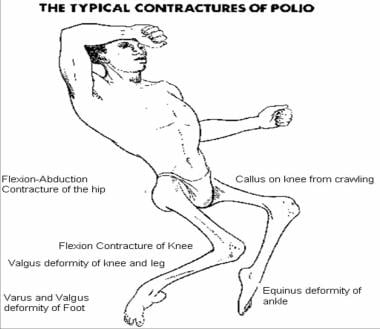Polio Was a Virus in Remission But is Back in Gaza, Why?
 |
We asked a virologist to explain how the virus emerged in the region after all this time, and how it will be dealt with.
Given that polio was all but eradicated in this region of the world, how might the ten-month-old baby in Gaza have caught it?
The sequences of the polioviruses detected in Gaza in July 2024 suggest that these viruses may be related to a strain circulating in Egypt, with the virus potentially being introduced to Gaza as early as September 2023.
This is probably due to the nature of the oral poliovirus vaccine (OPV), which contains a weakened live poliovirus that can be shed by vaccinated people. This suggests the virus may have been introduced by someone travelling to the region.
The war in Gaza has also provided an ideal environment for the virus to thrive and spread, due to the unhygienic conditions caused by little access to clean water and sanitation.
Can the virus “survive” (remain viable) for long periods without a human host?
Yes, poliovirus is an incredibly stable virus that can remain infectious for long periods outside of the human body, depending on the environmental conditions. For example, polioviruses are capable of surviving in groundwater for several weeks.
 |
| Those were the early lung machine that did the breathing for the patient |
Can you explain what “wild type” poliovirus is, compared with vaccine-derived “variants”?
Wild-type poliovirus is a virus that circulates naturally in the environment, whereas vaccine-derived strains are related to the weakened virus present in the OPV, which in sporadic cases is capable of reverting to a form capable of causing paralysis.
Is the wild type still endemic anywhere in the world?
Due to the success of the Global Polio Eradication Initiative, led by the World Health Organization, that began in 1988, type 2 and type 3 polioviruses have been declared eradicated. Only type 1 poliovirus is currently circulating in Afghanistan and Pakistan where there have been 27 recorded cases so far in 2024.
Most cases of paralytic polio are now vaccine-derived due to the success of the Global Polio Eradication Initiative. OPV has been instrumental in the near-eradication of wild polioviruses around the world. However, in areas where vaccination rates drop and enough people are susceptible to infection, the weakened virus can replicate. Unfortunately, each round of replication increases the potential for the virus to revert to a form that causes illness and paralysis.
Why was the old oral polio vaccine shelved in 2016?
Following the eradication of type 2 poliovirus in 1999, the only cases of type 2 paralytic polio were vaccine derived. Therefore, to stop these cases, there was a decision to shift from the original trivalent OPV, which contained all three poliovirus serotypes, to a bivalent OPV vaccine, which only contained type 1 and type 3 poliovirus strains. With an additional type 2 specific monovalent vaccine available to contain any vaccine-derived type 2 should any cases arise.
Was that a mistake, as some experts have suggested?
Although this decision was well-intentioned, hindsight suggests that the level of vaccine-derived type 2 poliovirus was underestimated. The Global Polio Eradication Initiative commissioned a report into this decision and the draft report, which is open for public comment, has described the switch to bivalent OPV as an “unqualified failure”.
What type of poliovirus vaccine is being used in the current campaign in Gaza?
Over 1.6 million doses of the novel oral poliovirus vaccine type 2 (nOPV2) – a new poliovirus vaccine – will be delivered to the Gaza Strip to provide two doses to more than 640,000 children under the age of ten.
Will it have the same risks as the old poliovirus vaccine? That is, might it get in the wastewater and cause more polio cases?
No, the nOPV2 is a next-generation version of the traditional type 2 monovalent oral polio vaccine that is used to respond to vaccine-derived type 2 poliovirus outbreaks. The key difference is that the new vaccine contains a weakened virus that has been modified to make it more genetically stable and significantly less likely to revert to a more virulent form capable of causing paralysis, thereby increasing the chances of stopping these outbreaks for good.
What other diseases are likely to emerge in Gaza, given the interrupted vaccination campaigns?
Other vaccine-preventable diseases such as measles, pneumonia and diarrhoeal diseases, such as rotavirus, all have the potential to emerge. Each with its own dangers and complications, therefore it is really important that as many vaccines as possible are delivered into Gaza.
Comments